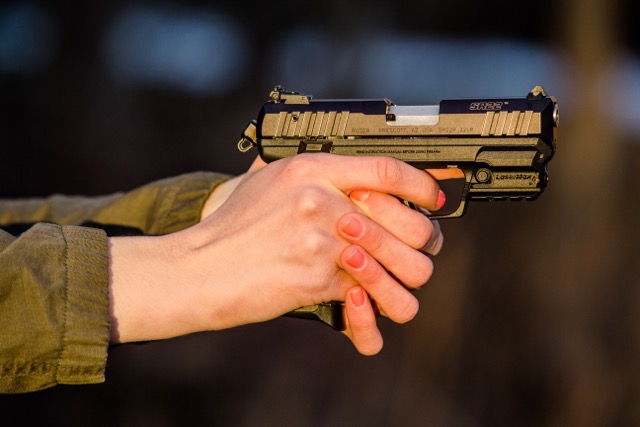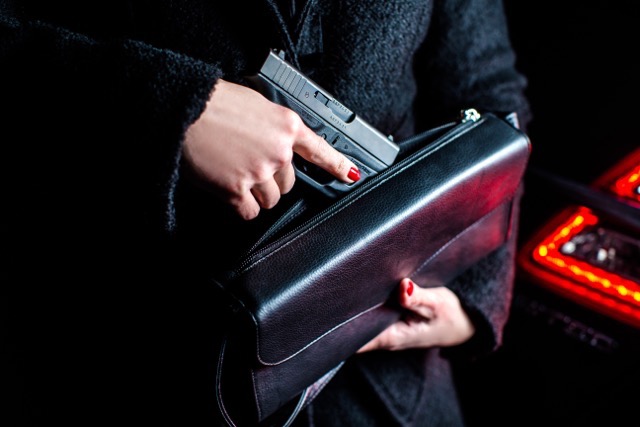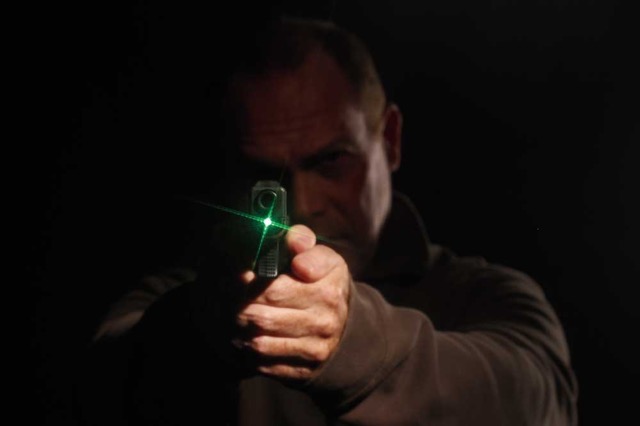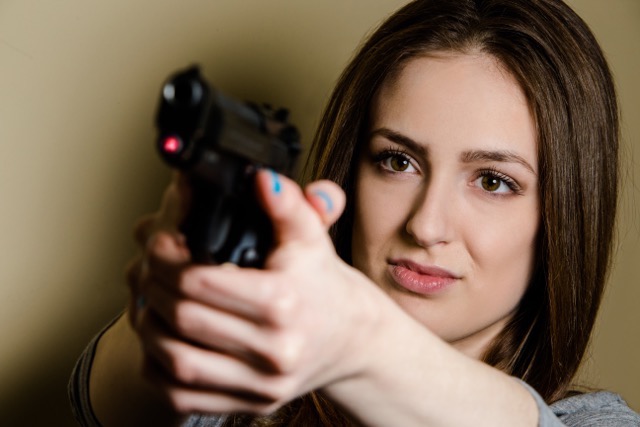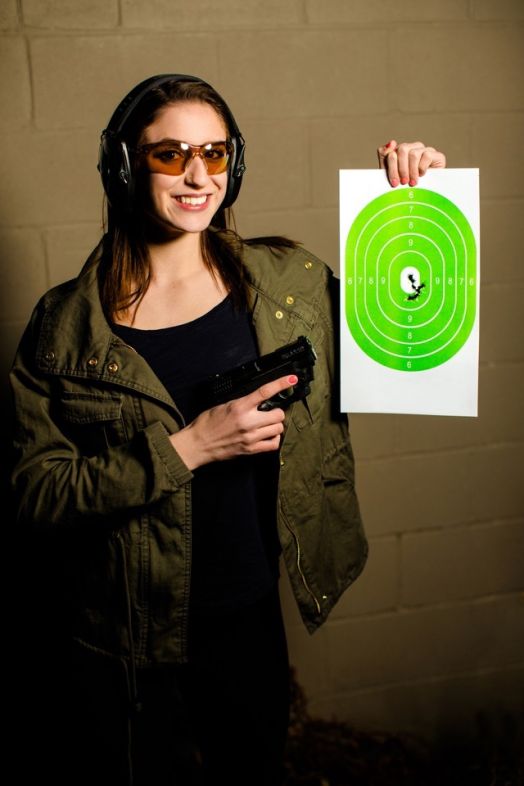By Stacy Bright, Woman’s Outdoor News
No matter whom you ask about the use of lasers on handguns, you’ll get varying opinions. Some people are strongly against them, and others are passionate supporters.
Those who oppose lasers are generally in favor of iron sights or night sights instead. Their argument is that a shooter will learn to aim using only the laser on the target rather than learning the basic sight-alignment/sight-picture fundamentals by using the built-in front and rear sights on the firearm. They ask, “What if the batteries fail or the laser malfunctions?”
Supporters of lasers explain that in low-light situations, such as in your home at night or in a dark parking lot, the chances of seeing your iron sights will be slim to none. Therefore, a laser is beneficial to their point of aim.
Despite the differing opinions, here are some ways lasers can serve as important training aids.

One of the best methods to become proficient with a firearm is to practice dry-firing. Check and double-check that your firearm is completely unloaded before doing any dry-firing exercise. Next, practice the fundamentals of marksmanship (grip, stance, sight alignment, sight picture, etc.). When you’ve acquired your target and you see the laser on your desired location, hold it steady and slowly squeeze the trigger. Continue to hold the laser steady for the follow-through, then lower the firearm if desired. By watching the laser movement, you can see how steady your grip, breath control and trigger squeeze really are. Practice repeating the slow, steady control each time and you’ll become a more accurate shooter.
Drawing from a Holster (or Purse)
Another training exercise involves leaving the laser on when holstered or in a bag. Practicing a safe draw (with a cleared weapon) helps you track the muzzle’s orientation from holster to target, allowing you to make sure that A) you’re being safe on the draw, and B) you’re eliminating unnecessary movements in order to get the weapon out of the holster and on target as expeditiously as possible, says Joseph D’Ambrosia, marketing and training coordinator for LaserMax and a retired staff sergeant for the U.S. Army. This is a vital skill for competition, duty and protection.
Aiming Under Stress
Dr. Alexis Artwohl, an internationally recognized behavioral science consultant to law enforcement as a trainer, researcher and author, found that 8 out of 10 of the officers she surveyed experienced tunnel vision during their shootings. (This is sometimes referred to as perceptual narrowing.) As the name implies, under extreme stress, such as occurs in a shooting, the area of visual focus narrows as if the officer were viewing the situation through a tube. If our ability to focus is limited to one thing—generally the threat—then the chances of being able to also focus on our iron sights is highly unlikely. The laser gives you the assurance of shot placement in this critical stress situation, placing the aiming point on the same visual plane as the threat.
The same principle could also be applied for those who have deteriorating vision due to age or injury. Prescription glasses might not be enough to enable the person to see their sights clearly. A laser gives the user a better possibility to see the beam on the target and still enjoy target practice.
According to D’Ambrosia, LaserMax lasers in particular have been designed specifically to make shooting with a laser sight safer. The Safe Activation feature allows the user to manually turn the laser on or off, so it is only projected when absolutely desired. In a home defense situation, for example, a homeowner would not want the laser tap-dancing on a wall to reveal her location while she attempts to protect herself from a threat before authorities arrive. More importantly, the activation switch ensures that the operator’s finger remains straight and off the trigger until she’s ready to take the shot.
If you choose to use lasers on your handgun, remember that lasers do not replace basic marksmanship and training. In a real-life situation where deadly force is necessary, you must be able to quickly and safely draw your firearm and get accurate shots on your assailant. Lasers can be a useful accessory, but practice is required. Different scenarios and environmental conditions affect your ability to draw and use your firearm, so train for varying possibilities and develop good habits each time.
Thanks to the team at Women’s Outdoor News – Click here to visit Women’s Outdoor News and share this site with the lady in your life.
Stacy Bright, is sponsored by LaserMax, Inc – Click here to check out LaserMax.com



